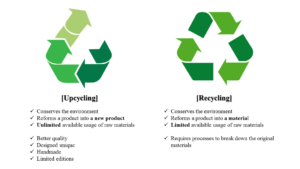As Black Friday has just finished and so has Cyber Monday , I feel overcome with a sense of sadness.
Cop 27 finished just 10 days ago, a moment where the “VIP’s” of the world ought to be finding a solution to the disasters humanity caused to planet earth. Yet, again, the outcome was not unanimous and no ground-breaking decisions were made. Adopting a sustainable lifestyle and business is really no longer optional; it is the bare minimum and probably not enough.
Let’s take a look at the definition of sustainability, it means:
Sustainability consists of fulfilling the needs of current generations without compromising the needs of future generations, while ensuring a balance between economic growth, environmental care and social well-being
So whatever actions we take, and calling them sustainable, the sum of these still do not add up to being truly sustainable because where we stand at the moment we are still compromising the future of the next generations.
I will try and look at it from a different perspective. What are we doing to ensure that we leave the world in a better state?
And yet we still push consumption.
A FEW FACTS…..
Did you know that…IN THE UNITED KINGDOM
22 million pieces of furniture are discarded each year in the UK, and the majority of this furniture is sent directly to the landfill as per The North London Waste Authority’s recent report. Additionally, this research revealed that less than 1 in 10 people consider repairing their furnishings to extend their life span.
1.6 million tonnes of bulky waste – 42% of which is furniture and 19% textiles, equating to a total of 670,000 tonnes of furniture and 310,000 tonnes of textiles waste is disposed of by householders in the UK annually and sent to landfill according to Wrap.
110,000 tonnes of furniture at Household Waste and Recycling Centres is reusable in its current condition.
32% of bulky waste is reusable in its current state, and this figure rises to 51% if we take into account items requiring slight repair.
30% of adults throw away household items that could have been donated, sold or reused and a fifth of 16-24-year-olds don’t actually know how to recycle or donate, according to new research from The British Heart Foundation.
…..IN THE UNITED STATES
According to the EPA, furniture waste generated by Americans in 2017 totalled a staggering 12.2 million tons, and 80.2% of it went to landfill. The agency also found that only 0.3% of the f-waste that was sent to landfill was recovered for recycling. To make matters worse, furniture waste doesn’t include items like carpets and rugs, of which Americans threw away an additional 3.4 million tons in 2017.
Part of the problem is “fast furniture”. Produced and sold by some of the biggest names in the furnishing and home improvement industries, these items are made using poor-quality materials and offered at prices so low that many people consider them disposable. Combined, the low quality and value of fast furniture mean it’s usually too expensive or difficult to repair, sell, or donate, and it‘s much more likely to end up on the curb than the more expensive, robust furniture of previous generations.
And just like with fast fashion, the culture of fast furniture encourages consumers to update their home decor to follow constantly changing design trends. Tempted by annual catalogues promoting new and updated products, many people are eager to buy new furniture to replace the old, out-of-date pieces they already have.
Office furniture is actually the primary source of f-waste, accounting for an estimated 8.5 million tons of furniture waste per year. And with offices gradually downsizing to accommodate the shift to working from home, this figure is likely to increase over the next few years, at least temporarily.
It’s actually quite frightening … and yet we continue to CONSUME!
Reducing furniture waste is becoming a growing concern. Sending these bulky items to landfill not only has a huge impact on our natural environment and is putting us in danger from harmful chemicals and greenhouse gases – it costs an absolute fortune!
So this is where we stand,-… but we are moving … from straight to circular
The problems with furniture waste disposal
… but Ah!! There is a slight problem with furniture here:
A single item of furniture is often composed of multiple different materials, including wood, metal, and various types of plastic, many of which are difficult to recycle. Taking furniture apart and processing each type of material separately is time-consuming and expensive.
Rather than solid wood, a lot of furniture also utilizes chipboard, which is made of chopped-up pieces of wood sealed together with glues that contain toxic chemicals and is often laminated with plastic. Some older pieces of furniture also contain chemicals that are hazardous to health, like flame retardants. These materials are not only almost impossible to recycle, but also difficult and expensive to dispose of safely.
However, we must say several furniture companies starting from Ikea are trying out buyback schemes to incentivize recycling and others are starting to design with sustainability in mind already at the beginning of the project
That said, what to do with the rest of the unwanted furniture?
Another option is upcycling (or downcycling). Let’s take a look at the differences with recycling

Let’s look at upcycling. What is it exactly and can it really be used in interior design without looking “cheap”
Upcycling can be defined as reusing an object in a new way, without degrading the material it is made from [2]. The process relates with the recreation of used materials or also known as waste materials to recreate and giving it another new life or function without having to spend much in getting new materials [1]. In other words, it makes old things new again. This method is not only taken for better life quality, but it also gives a sense of a higher environmental value to the invented products. Upcycling gives the item an even more “important role that that of its original use
Downcycling on the other hand is something that occurs when items that are recycled are converted into items of lesser quality due to the recycling process itself.
In both cases it is a process that can be repeated in perpetuity of returning materials back to a pliable, usable form without degradation to their latent value—moving resources back up the supply chain.
At a glance:
Recycled – in it’s broadest sense – used again and value remains unchanged
Downcycled – items are turned into new items of a lesser quality than their original state
Repurposed – used again but with a new purpose
Upcycled – used again, with a new purpose, and with greater value than its original state
To put it in a nut shell –
Upcycling is designed to encourage people to think of new and innovative ways to use things, and it is becoming more and more accepted and may I even say a bit of a trend; certainly, younger generations are more sensitive to this concept.
Lets take a brief look at some ideas of how people have upcycled/ recycled/repurpused everyday items.



So we can say we are taking sustainable steps – but to say we are totally sustainable is still a bit far fetched in my opinion.